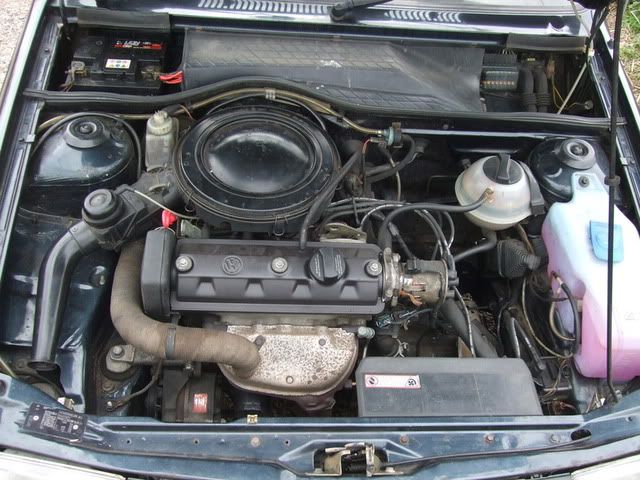Bring us up to date with the engine type, will you, and the age of the car?
Its so easy to throw new parts at the thing, and we've all been down that road!
Have you tried a push start?
John

1991 1.3spi AAV engine code. Bosch mono-motronic ECU
Looks like this:
Haven't tried push start, bit tricky due to location. But my lack of fuel problem is unlikely to be solved by giving it a push, is it?
Reading up on the system in the Haynes:
1 The Bosch Mono-Motronic system is a self-
contained engine management system, which
controls both the fuel injection and ignition.
This Chapter deals with the fuel injection
system components only - refer to Chapter 5A
for details of the ignition system components.
2 The fuel injection system comprises a fuel
tank, an electric fuel lift pump an electric fuel
line pump, a fuel filter, fuel supply and return
lines, a throttle body with an integral
electronic fuel injector, and an Electronic
Control Unit (ECU) together with its
associated sensors, actuators and wiring.
3 The fuel lift and line pumps deliver a
constant supply of fuel through an
accumulator/coarse mesh filter and a fine
mesh cartridge filter to the throttle body, at a
slightly higher pressure than required. The fuel
pressure regulator (integral with the throttle
body) maintains a constant fuel pressure at
the fuel injector and returns excess fuel to the
tank via the return line. This constant flow
system also helps to reduce fuel temperature
and prevents vaporisation, aiding hot starting.
4 The fuel injector is an electromagnetically
operated pintle valve, which is opened and
closed many times per second by an
Electronic Control Unit (ECU). When the valve
is open, fuel is sprayed in conical pattern onto
the back of the throttle disc. The ECU
calculates the injection timing and duration
according to engine speed, throttle position
and rate of opening, inlet air temperature,
coolant temperature, road speed and exhaust
gas oxygen content information, received
from sensors mounted on the engine.
5 Inlet air is drawn into the engine through the
air cleaner, which contains a renewable paper
filter element. The inlet air temperature is
regulated by a vacuum operated valve
mounted in the air cleaner, which blends air at
ambient temperature with hot air, heated by
the exhaust manifold.
6 Idle speed control is achieved as follows.
An electronic throttle positioning module,
mounted on the side of the throttle body alters
the amount of air entering the engine and
hence the idle speed. The ignition system
provides idle speed stability by increasing and
decreasing the engines torque through.


